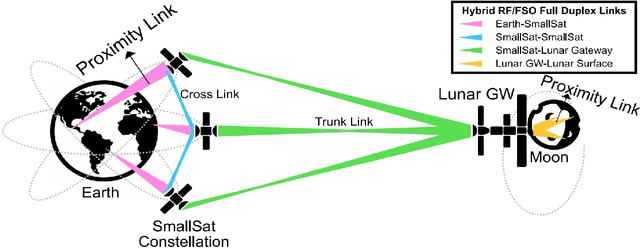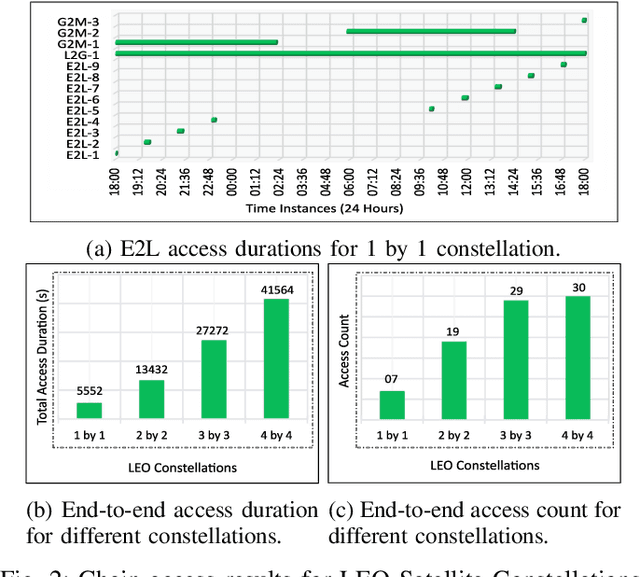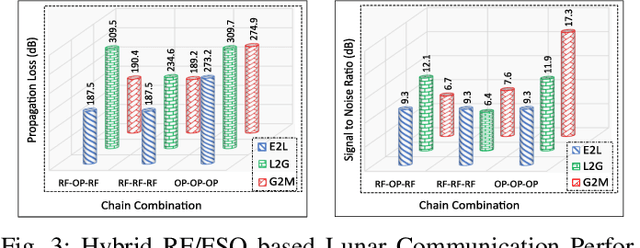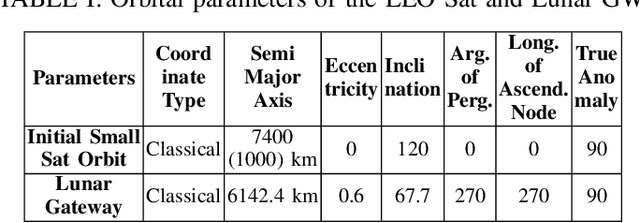Towards a Hybrid RF/Optical Lunar Communication System (LunarComm)
Paper and Code
Mar 29, 2022



The prospect of mankind returning to the Moon has garnered a great amount of attention in recent years. Dozens of lunar missions are planned for the coming decade which will require the development of a sustainable communication infrastructure with high data rates and minimal latency. Space communication systems thus far have relied on Radio Frequency (RF) links alone, but recent developments in laser communications have demonstrated that Free Space Optical (FSO) links can achieve much higher data rates. Upon considering the respective benefits and drawbacks of RF and FSO links, we make a case for the integration of these two technologies into a hybrid RF/FSO lunar communications architecture which leverages small satellites in a Low Earth Orbit (LEO) constellation. We include a case study for this technology designed in Analytical Graphics Systems Tool Kit (STK) software. Results are presented in terms of chain access duration, propagation delay, transmission loss, Signal-to-Noise Ratio (SNR), and Bit Error Rate (BER). This architecture shows potential to revolutionize extraterrestrial communications and pave the way for highly ambitious future missions in space.
 Add to Chrome
Add to Chrome Add to Firefox
Add to Firefox Add to Edge
Add to Edge